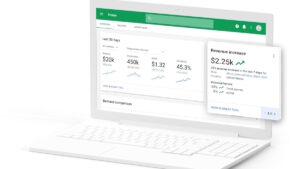By Tom Laband, CEO & Co-founder of Adsquare
The marketing landscape is changing with identity-based targeting being on the decline. New privacy regulations like GDPR or CCPA; restrictions on advertising identifiers imposed by Google or Apple; and a new consumer awareness have accelerated this change over the past months. The authenticated traffic will be limited in scale and restricted to those users actively logging into websites and apps.
Hence, leveraging the anonymous web will become more important. In consequence, contextual targeting is experiencing a renaissance. One particular concept of contextual intelligence, which has long been underrated, currently stands out: Proximity Targeting.
Digital advertisers have long targeted people based on the context of publisher content. It’s the very basics of advertising. The same principle extends to Proximity Targeting, also known as Geo-Contextual or Location Targeting, but instead of targeting based on the context of publisher content, advertisers target based on the context of location. In its simplest form, that could be a burger chain, running a drive-to-store campaign by advertising on billboards in the vicinity of a branch restaurant.
Proximity Targeting in the programmatic advertising world is a little more complex. A range of apps collect data on the longitude and latitude of users as part of their function. Websites you visit can also determine your physical geographical location, for example via the IP address. Out-of-Home inventory owners quite logically also have knowledge about the exact locations of their digital screens. The geocoordinate is passed on by Supply Side Platforms (SSP) to advertisers’ Demand Side Platforms (DSP) as part of a bid request. Third-party intelligence providers like Adsquare can enrich this location data in real- time with data about the context of the surrounding space.
From an advertiser’s perspective this type of Proximity Targeting couldn’t be simpler to activate. Pre-bid, the advertiser can select places of interest from a catalogue of spatial data, which are then uploaded via API integrations into the DSP prior to building and activating the campaign.
Using spatial data, a burger chain could select to target all active smartphone users in proximity of its branch restaurants or those on site of the competition. Similarly, a luxury watch company could target polygons with a concentration of wealthy households. A car brand could target areas with a higher than average rate of spending on new or pre-owned vehicles. At this point of time people are in no way being targeted, only locations. No personal data is used and the privacy of individuals is in no way in question.
The location-based Targeting described above is a tried and tested advertising approach that already adds value to advertising campaigns. However, exciting developments in Proximity Targeting mean that the approach is becoming even more powerful at targeting specific audiences. That’s great news for advertisers as it will help them offset the deprecation of MAIDs in the mobile space, but it will also open new opportunities to significantly improve the targeting of DOOH campaigns.
The first innovation in Proximity Targeting is the addition of time as a data element. Data can be gathered in a dynamic way to provide intelligence on the context of a location over time. For instance, weather data can provide an hour by hour snapshot of what weather conditions will be like over the course of a day, allowing advertisers to choose frames and latitudes/ longitudes on a granular basis based on temperature, precipitation, or pollen conditions. We are able to build weather-infused purchase intent segments such as gardening weather, health weather or barbecue weather. Think of a barbecue sauce manufacturer that wants to target users in locations, of which we know that the next day will be high in temperature and are therefore setting the scene for outdoor barbecues.
Where the latest iteration of Proximity Advertising really gets exciting is when geo-located audience data is added to the mix. Audiences in Motion are Adsquare’s consumer mobility data sets. Adsquare combines mobile audience data with SDK-derived movement data and connects the corresponding audience segments to country specific geometries and OOH locations.
For each segment, Adsquare calculates indexes based on the ratio between all users seen within a geographic area and the desired audiences. These calculations allow Adsquare to score each audience segment for each geometry and for each hour of the day. For full control about quality and reach, marketers are able to change the index value in Adsquare’s self-service platform. Adsquare understands what parts of cities are more visited when and by whom, enabling marketers to run targeted ads in real-time with a lot more precision.
Imagine, for example, a sports apparel brand, being able to activate a marketing message on a digital billboard the moment a gym lover walks by, and then retargeting that same person on their mobile device moments later.
On the surface, it may sound like creating Audiences in Motion is only achievable with access to tracking IDs. In fact, the approach relies on statistical modelling, so it can be achieved with only a small volume of identifiers. In addition, Adsquare is increasingly unlocking the power of mobile network data through partnerships with telcos. Mobile network data, also known as spatial telco data, is cross-referenced movement and CRM data in an aggregated and anonymized form connected to a geographic level such as postal code.
Spatial telco data helps programmatic advertisers to target the right local context without relying on cookies, Mobile Advertising IDs or other identifiers classified as personal identifiable information (PII). As a result, the approach is fully GDPR-compliant and respects the privacy of consumers completely.
Combined, audience data and movement data allow for the indexing of where certain groups will be overrepresented during certain moments of the day. Put another way, the approach means advertisers can see exactly where their target audiences will be at any given time. That means more relevant Out Of Home Advertising and the regained ability to provide personalised content to mobile users.












